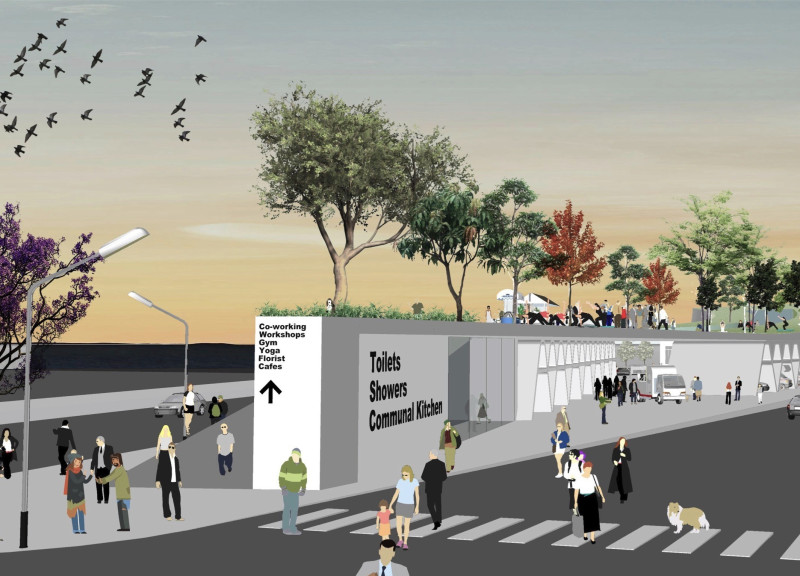5 key facts about this project
At its core, the project serves as a multifunctional space, aiming to enhance the quality of life for its users while fostering social interactions. The design addresses community needs by incorporating both public and private areas, allowing for a range of activities and gatherings. This duality is key to the building’s purpose, articulating a dialogue between interior and exterior spaces that invites exploration and engagement.
In examining the architectural elements, one notices a careful selection of materials employed throughout the project. The combination of locally sourced timber, eco-friendly concrete, and expansive glass panels reflects a commitment to sustainability and environmental harmony. The use of timber not only adds warmth and texture to the façade but also establishes a connection to the surrounding nature, while concrete provides structural integrity and durability. Glass serves as a crucial element, enhancing natural light penetration and creating a visual continuity with the external landscape.
The design approach is marked by its innovative use of open spaces, promoting a sense of flow and connectivity. The layout carefully considers circulation patterns, allowing users to navigate seamlessly between different areas. Galleries and communal spaces are strategically placed to encourage interaction, while private zones are designed for reflection and quiet. These aspects underline a clear understanding of the needs and behaviors of users, resulting in a built environment that is both welcoming and adaptable.
Landscaping plays a significant role in the overall design, complementing the architecture and enhancing the site's ecological footprint. Green roofs and vertical gardens are integrated into the building’s design, not only providing aesthetic benefits but also contributing to biodiversity and improving air quality. This incorporation of greenery creates a restorative environment that encourages well-being, aligning with the project’s commitment to sustainability.
The project also stands out due to its innovative architectural features. One can observe dynamic rooflines and sculptural elements that challenge conventional forms, inviting curiosity while adhering to a cohesive overall aesthetic. These features serve not merely as stylistic choices but are emblematic of the project's ethos—pushing boundaries while remaining rooted in practical considerations.
Throughout the architectural design, thoughtful details enhance the user experience, from the choice of durable yet visually appealing materials to the integration of technology that supports energy efficiency. The project exemplifies thoughtful craftsmanship, where each element is carefully considered to contribute to the broader narrative of the design.
Exploring the architectural plans, sections, and elevations reveals additional layers of complexity within the project. These drawings encapsulate the intricate relationships between spaces and the intentions behind their configurations. The strategies employed in the architectural sections highlight the interplay of light, shadow, and spatial dimensions, providing further insights into the project's conceptual foundations.
In reviewing this architectural endeavor, one can truly appreciate the attention to detail and the commitment to enhancing community interaction through thoughtful design. For those interested in delving deeper into this project, exploring the architectural plans, sections, and various design aspects can offer a more comprehensive understanding of its unique qualities and vision. This exploration is encouraged for anyone looking to gain further insights into the innovative approaches that define this distinguished architectural project.






















